Terran
Active Member
- Joined
- Oct 30, 2009
- Messages
- 527
- Age
- 33
EvilDragon [Englischer Beitrag] said:We've made some good progress - so time again to make another summary
1. The Rotator Chip
The only issue left right now is that we got some tearing when using the rotator chip.
For those who don't know what that is: When writing to and reading from the framebuffer is not properly synchronized, the picture you can see of the LCD is from two different frames (i.e. top half frame 1, bottom half frame 2).
This gives an effect as if the screen is torn into two halfs when you got videos or games with fast movement.
To prevent this, you need to synchronize the OMAP5 with the SSD (rotator chip) so that the framebuffer is not being overwritten while it's being read.
This is a bit more software work than we thought. There's a special signal line from the SSD to the OMAP that is being used to synchronize both devices, but that only works in MIPI Command Mode, whereas we are running the OMAP5 using MIPI Video Mode.
So as a solution, we'd either need to change the existing driver somehow so that the TE line can be used in Video Mode as well OR try to use the OMAP5 in Command Mode instead of Video Mode.
We don't know yet which one of those two will be easier to achieve, but both of them might be a bit time consuming.
Nevertheless, the hardware itself is working fine, so Nikolaus now concentrates on the remaining hardware - fixing the software can happen while we're waiting for the mass production to start (or even afterwards).
So the display including the rotator works fine, but we currently have some tearing issues with fast moving content until we improved the driver.
2. The case
Basically, the case is finished.
I've printed the last revision and am just waiting for some final prototype boards to assemble everything - and once I confirm that everything fits, the real mold is being created.
I expect it to be finished about October.
Of course, as soon as I assemble it, I'll create a video of it!
3. The keyboard
The keyboard design is basically finished.
The normal keys will be surrounded by a bit of transparent silicone mat (but will be 0,1mm higher), which will give a nice feeling and also light up the key surroundings as well as the characters.
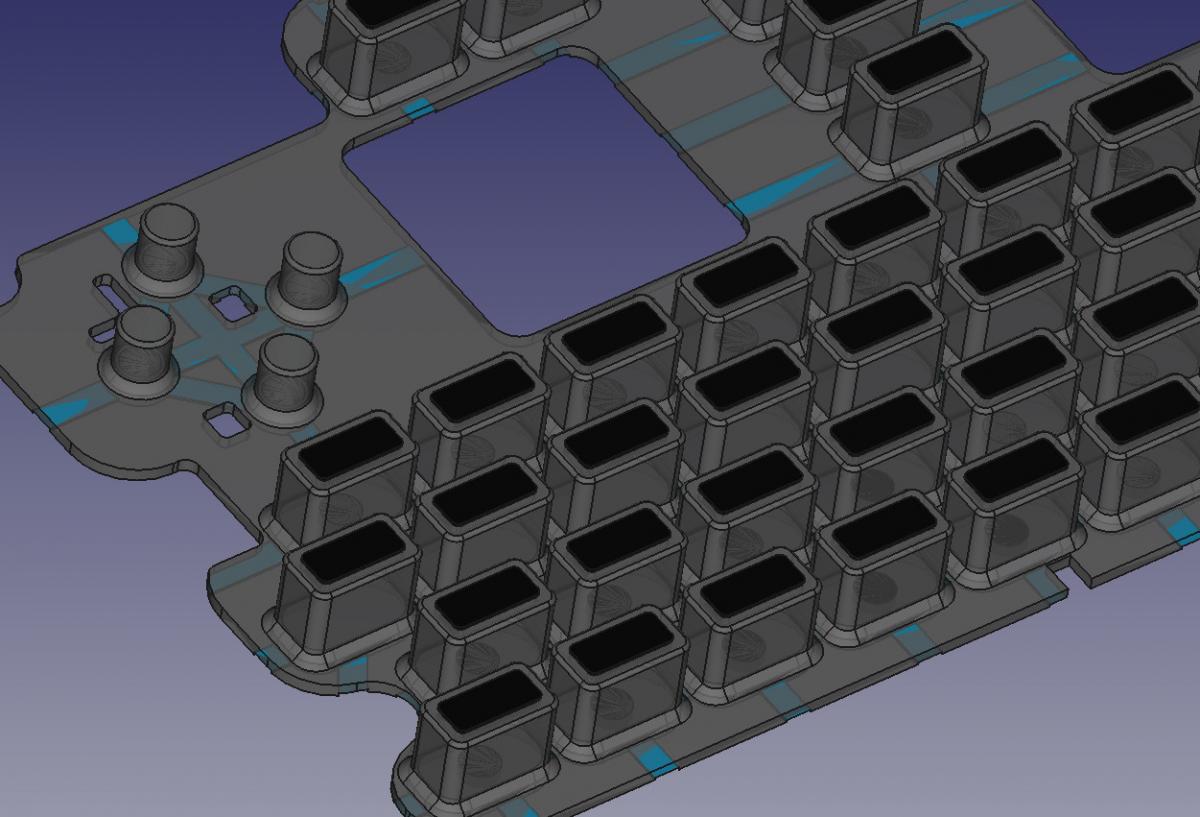
The only exception will be the gaming buttons:
Here, the plastic of the buttons will be glued on top of the mat, so they feel like standard gaming buttons (yes, this has changed within the last few days).
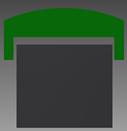
Mold production here should start within the next week and will take approximately one month.
The means: Yep, there's no way I can run away from reading the keyboard layout threads anymore
4. The hardware
Nikolaus was working on the rotator chip as well, to find out what was hardware and software related.
As you probably can imagine, fixing hardware later will be hard, but fixing software is possible
A week ago, Nikolaus restarted the work on the hardware.
Within this week, he created 106 traces within 15 hours work (so about 7 traces per hour).
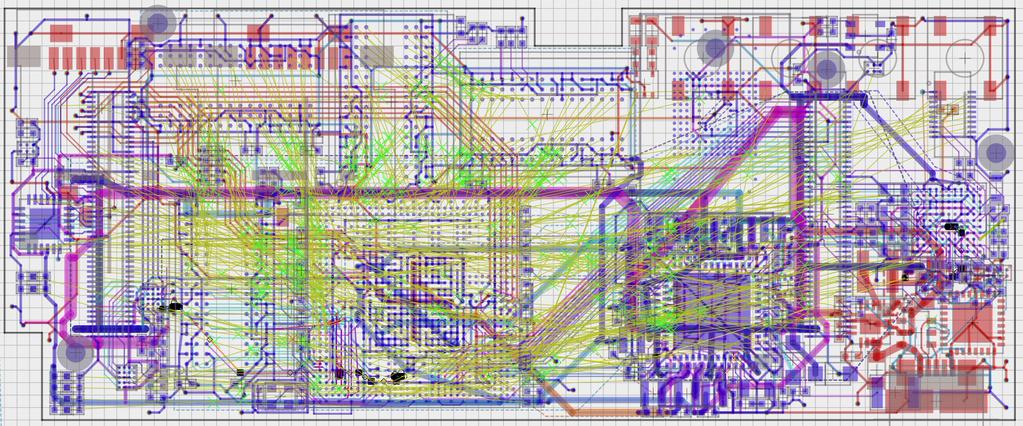
410 traces are left to be created - so if he continues in the same pace, the CPU board will be finished in about 15 days.
Could be a bit faster as well though (some non-critical traces could be made using the auto-router), but we'll see.
Our goal is to have the full hardware finished within July, so we actually have real prototypes ready to show at the GamesCom in August.
Yep, if you're visiting there, you might be able to play on a real Pyra prototype!
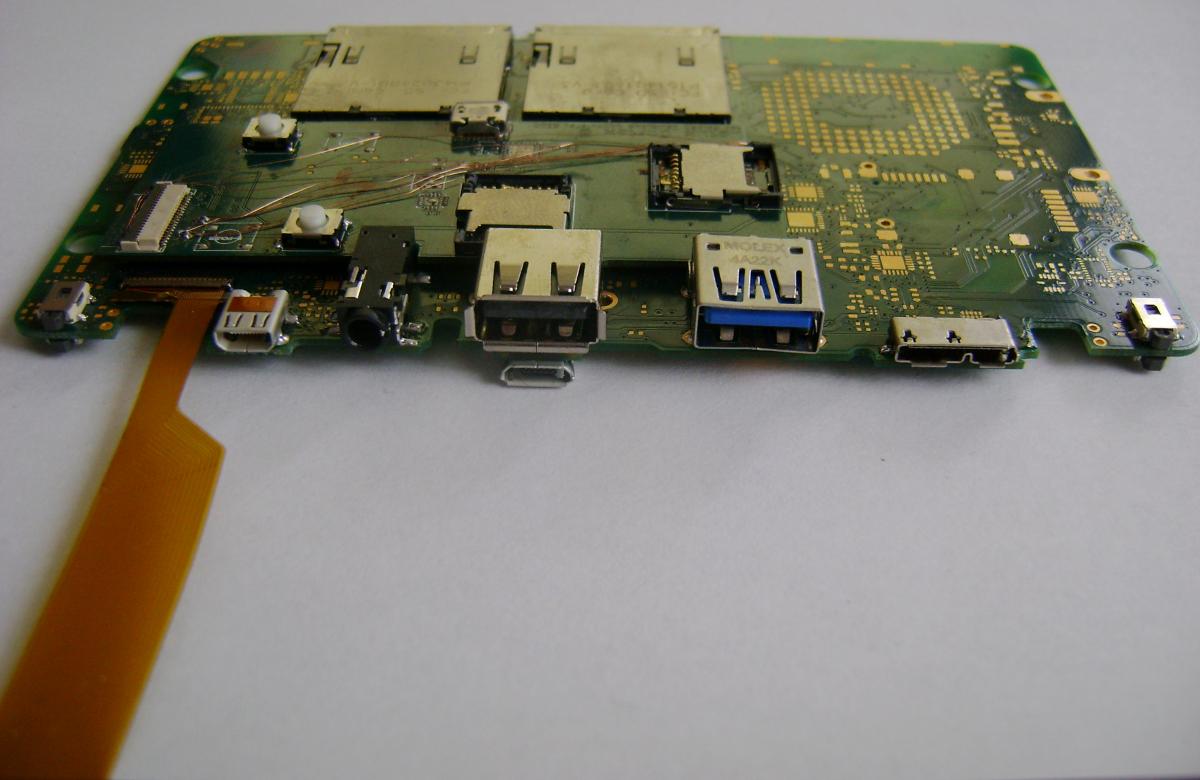
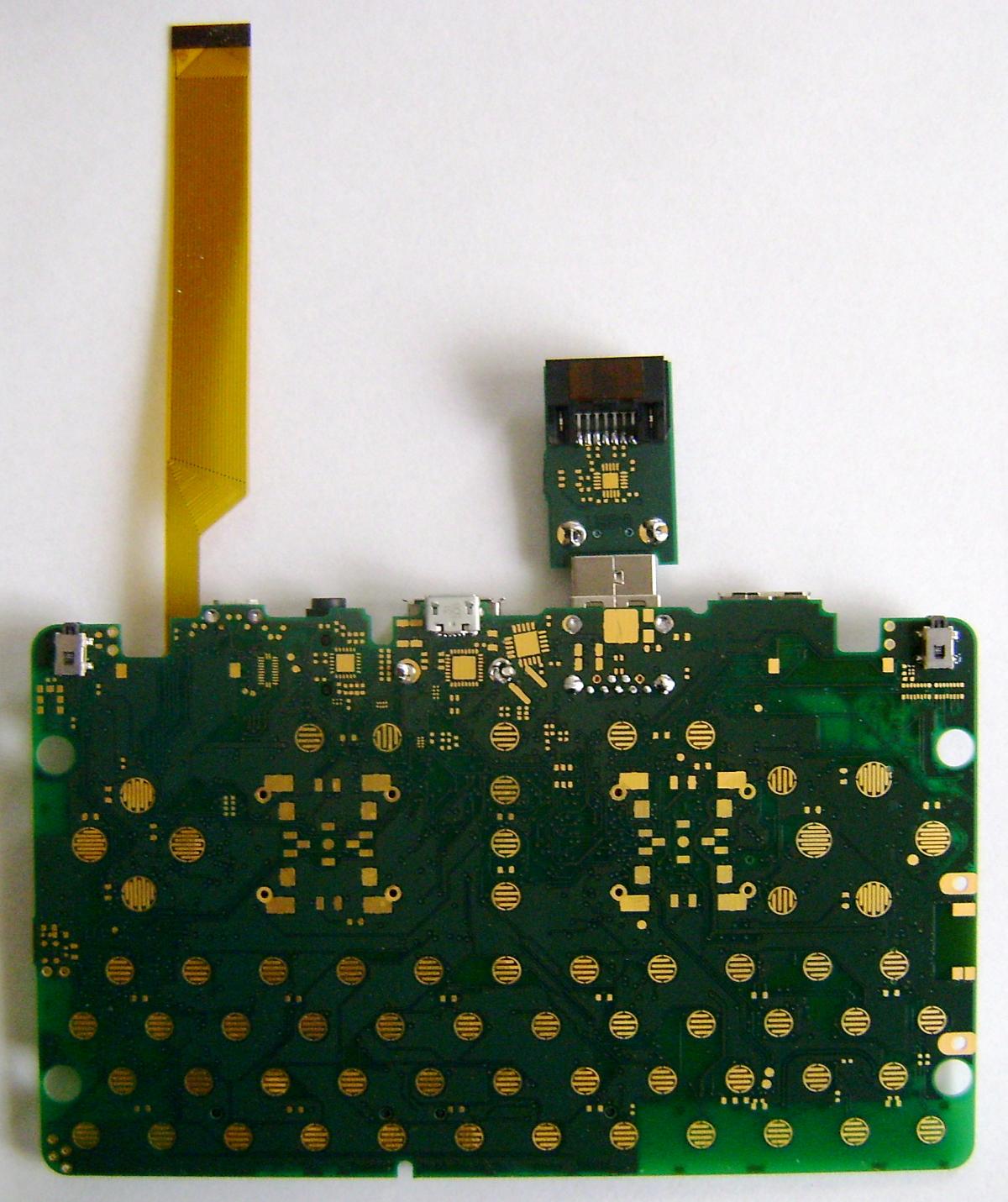
Shortly after that preorders will start (unless we find some major issue with the prototype) - with a lot of videos following.
Well, that's what we're planning anyways - let's hope we can keep that and it will work out!
Nikolaus also started to work on the e-SATA adaptor which plugs into our USB port for those who want to connect a SATA device to the Pyra.
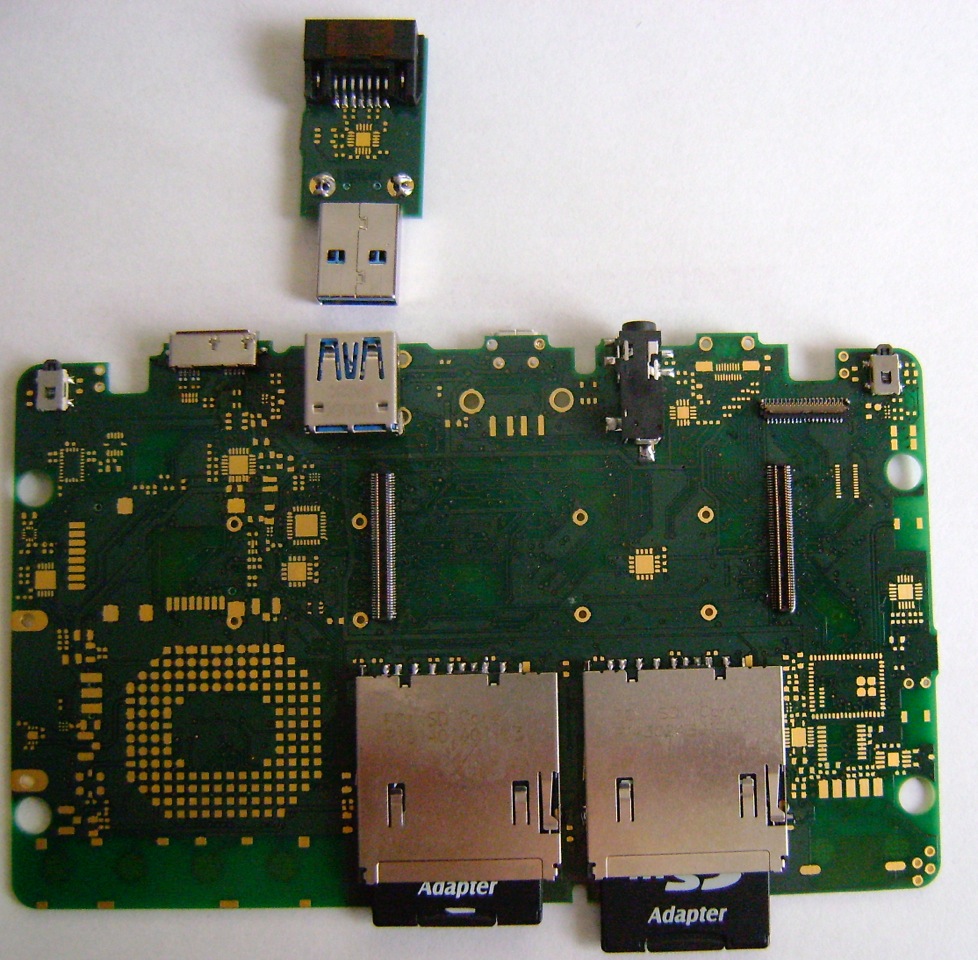
Some good progress, I'd say
Hopefully back with more good news soon.
Übersetzung said:Wir haben guten Fortschritt gemacht - zeit für eine kleine Zusammenfassung.
1.) Der Rotations-Chip
Das letzte Problem, das noch vorhanden ist, ist das tearing, wenn wir den Chip verwenden.
Für die, die nicht wissen was das ist: Wenn in den Framebuffer geschrieben wird, oder davon gelesen wird und dieser nicht korrekt Synchronisiert ist, ist das Bild auf dem LCD von zwei unterschiedlichen Frames (zum Beispiel, die obere Hälfte von Frame 1 und die untere Hälfte von Frame 2).
Das sieht so aus, als ob der Bildschirm in zwei Hälften gerissen wird, wenn du Videos, oder Spiele mit schnellen Bewegungen hast.
Um dies zu verhindern muss der OMAP5 mit dem SSD (Rotations-Chip) synchronisiert werden, damit der Framebuffer nicht überschrieben wird, während er gelesen wird.
Das ist mehr Softwarearbeit, als wir dachten. Es gibt ein spezielles Signal vom SSD zum OMAP5, das zur Synchronisation beider Geräte verwendet wird, aber das funktioniert nur im MIPI-Kommando-Modus, währenddessen wir uns mit dem OMAP5 aber im MIPI-Video-Modus befinden.
Als Lösung müssten wir den verwendeten Treiber so verändern, dass damit die TE-Leitung im Video-Modus verwendet werden kann, oder wir versuchen den Kommando-Modus mit dem OMAP5 im Video-Modus zu verwenden.
Wir wissen noch nicht, welches davon leichter zu erreichen ist, aber beide könnten zeitverschlingend sein.
Nichtsdestotrotz funktioniert die Hardware gut, Nikolaus konzentriert sich auf die verbleibende Hardware - die Software ausbessern kann bis zur Massenproduktion warten (oder auch danach).
Das Display funktioniert mit dem Rotations-Chip, aber es gibt bei schnellen Bewegungen noch tearing, bis wir den Treiber verbessern.
2.) Das Gehäuse
Grundsätzlich ist das Gehäuse fertig.
Ich habe bereits die letzte Revision gedruckt und warte nur noch auf die finalen Prototypen der Boards um alles zusammenzubauen - und wenn ich alles geprüft habe, ob alles passt, können die Formen erstellt werden.
Ich erwarte, dass diese ungefähr im Oktober fertig sind.
Natürlich werde ich ein Video machen, sobald ich alles zusammengebaut habe.
3.) Das Keyboard
Das Keyboard-Design ist grundsätzlich fertig.
Die Tasten werden mit einer leicht transparenten Silikonmatte umrandet sein (werden aber 0,1mm höher sein), was ein gutes feeling gibt und die Taste wird rundherum erleuchtet, sowie die Zeichen.

Die Ausnahme sind die Gaming-Buttons:
Hier ist das Plastik von dem Knopf auf die Matte geklebt, dammit fühlen sie sich wie Gaming-Buttons an (Ja, diese Änderung wurde in den letzten Tagen getroffen)

Die Produktion der Form sollte in den nächsten Wochen starten und wird ungefähr einen Monat dauern.
Das heißt: Ich werde um die Threads vom Keyboard-Layout nicht mehr herumkommen.
4.) Die Hardware
Nikolaus hat ebenfalls am Rotation-Chip gearbeitet, um herauszufinden, was Software- und Hardwareseitig problematisch war.
Wie ihr euch denken könnt, Hardware später zu reparieren ist schwieriger als Software
For einer Woche hat Nikolaus angefangen an der Hardware zu arbeiten.
Innerhalb dieser Woche hat er 106 Leiterbahnen in 15h Arbeit geschafft (das sind 7 Bahnen pro Stunde).

410 Leiterbahnen sind noch offen - wenn er in dieser Geschwindigkeit weitermacht, ist das CPU-PCB in circa 15 Tagen fertig.
Könnte auch schneller gehen (einige nicht kritische Leitungen könnten mir dem Auto-Router gemacht werden), aber wir werden sehen.
Unser Ziel ist es ende July eine komplette Hardware zu haben, damit wir einen echten Prototypen auf der GamesCom in August haben.
Ja, wenn ihr die GamesCom besucht könntet ihr auf dem echten Pyra Prototypen spielen!


Kurz danach werden wir mit den Vorbestellungen anfangen (wenn wir keine großen Probleme im Prototypen finden) - mit vielen folgenden Videos.
Das ist was wir geplant haben - lasst uns hoffen, dass wir das halten können und dass es funktioniert!
Nikolaus hat auch angefangen am e-SATA-Adapter zu arbeiten, welcher in den USB-Port gesteckt wird, für die, die ein SATA-Gerät an der Pyra betreiben wollen.

Viele gute Nachrichten für heute würde ich sagen.
Hoffentlich komme ich mit mehr guten Nachrichten bald zurück.
Blog
Quelle


